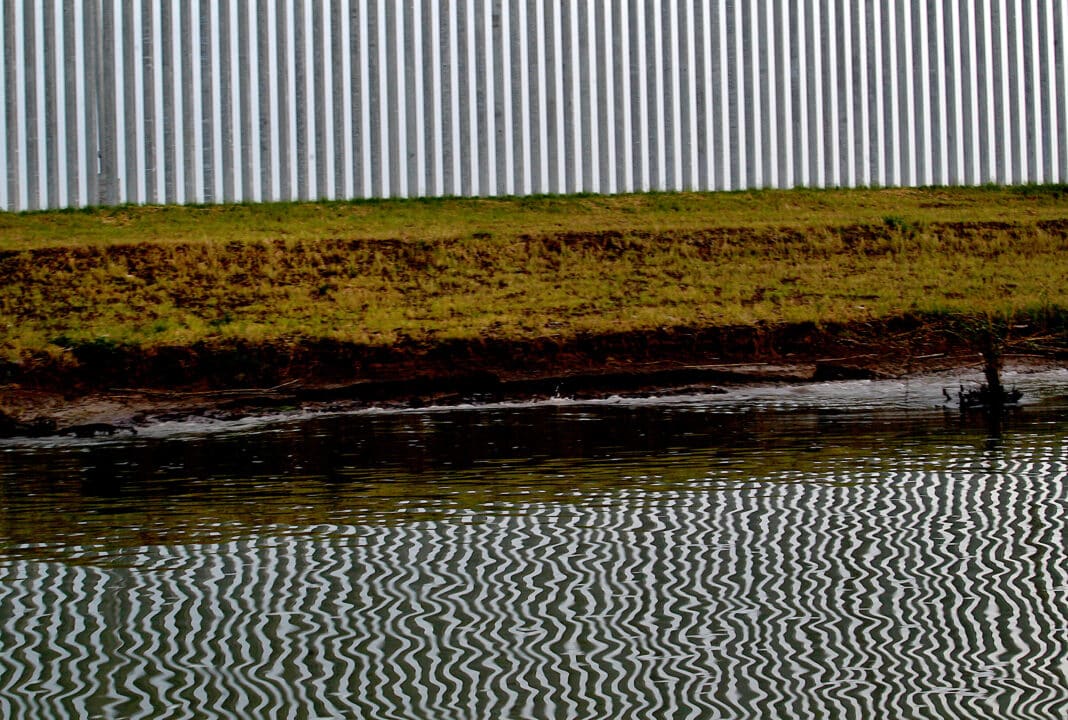Hidalgo County Judge Richard F. Cortez announced the Department of Homeland Security has agreed to fix the levees damaged by recent efforts to build a border wall.
“Today’s announcement by the Department of Homeland Security to repair Hidalgo County’s protective levee barrier is welcome news,” Cortez said Friday afternoon. “I appreciate DHS and the Biden Administration acknowledging that this flood barrier system is a critical deterrent to catastrophic flooding.”
DHS’ announcement came after county officials and federal lawmakers pressed the Biden administration to address the levee breaches left behind after the president ordered a halt to all border wall construction when he assumed office in January.
“The flood barrier system had long provided low-lying regions of Hidalgo County, Texas, protection from catastrophic flooding, and these breaches have threatened local communities,” the announcement said, in part.
“DHS will start to work to quickly repair the flood barrier system to protect border communities. This work will not involve expanding the border barrier,” the statement read.
Officials with both DHS and the Department of Justice said they received no guidance in January or the ensuing weeks from the Biden administration on what to do regarding the stalled construction or the myriad border wall land condemnation lawsuits still pending in federal courts.
With the June 1 start of hurricane season soon approaching, local officials have become increasingly concerned about what the gaps in the Rio Grande Valley’s levee system will mean for the dozens of low-lying communities here — many of which struggle with outdated storm drainage systems — should a major storm come to pass.
Hidalgo County leaders became so concerned that on Friday, they announced their intent to address the levee breaches themselves.
“This is very simple: the federal government does not seem to have the same sense of urgency that I have,” Cortez said via a news release prior to the DHS announcement.
“So I have asked county work crews and some independent contractors to begin to assess the process and the costs of fixing four major breaches in our protective levee system that were caused by federal contractors,” he said.
The county had begun looking into the legalities of such efforts since all construction on the levees must receive prior approval by the International Boundary and Water Commission, which maintains authority over the levee system.
However, a spokesperson for the IBWC said, as of Friday, the commission had not received any requests from local entities seeking to repair the levees themselves, adding that any such request would be reviewed and would need to abide by IBWC design standards.
“As standard practice, any work that is done on the U.S. IBWC levees does need to satisfy our design criteria for the levees,” said Sally Spener, U.S. Secretary of the IBWC.
“They’re engineered to provide flood protection to FEMA standards and they need to meet those requirements, as well as other IBWC requirements,” she said.
Among the federal lawmakers who began pressing the urgency of the levee situation was U.S. Rep. Vicente Gonzalez, D-McAllen, who on Wednesday sent a letter to the White House seeking a meeting with the president over the issue.
Gonzalez responded to the DHS announcement by saying he was pleased the administration had taken such quick action to begin remedying the broken levees.
“It’s imperative that these structures are fixed prior to hurricane season. Anything less is unacceptable,” Gonzalez said in a statement.
But it remains unclear whether that June 1 deadline will be feasible.
DHS said it is still working on a plan to address the damaged levees, and The Monitor is awaiting a response to questions regarding such repairs — including timelines, costs and funding.
But Spener, of the IBWC, offered some hint of the scope of the repairs.
“Our engineers have been coordinating with officials from the U.S. Army Corps of Engineers and U.S. Customs and Border Protection for weeks on this matter,” Spener said. “And we have reiterated the importance for providing flood protection to the local community prior to hurricane season, which of course begins June 1.”
While construction on the border wall was still active, the IBWC required contractors to have emergency plans in place should a storm head toward the Valley. Similarly, the USACE must also maintain plans for what Spener termed “emergency flood protection.”
“We have always reiterated the responsibility of the U.S. Army Corps of Engineers and U.S. Customs and Border Protection to provide emergency flood protection for any areas where border wall construction has affected the integrity of our flood control levees,” Spener said.
“Part of our discussion is the emergency flood protection as well as the repairs that need to be made for the long term,” she added, indicating some fixes that are part of emergency plans are meant to be temporary.
Whether the levee repairs soon to be undertaken by DHS will involve short-term solutions or long-term ones remains to be seen. Spener deferred additional questions to DHS, CBP and USACE.





